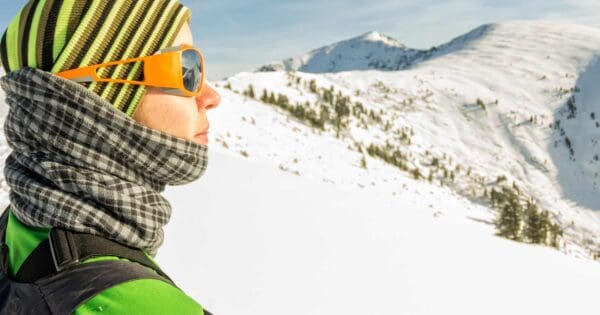A guide to choosing your hiking hat
Australia’s diverse landscapes beg to be explored, from sun-drenched outback tracks to windswept coastal paths. But before you lace up your boots and hit the trail, there’s one crucial piece of gear to consider: your hat. In the ever-changing Australian climate, the right headwear can be the difference between a blissful hike and a sunburnt, soaked saga.
Sun shielders: Wide brims and beyond
Let’s face it, Australia’s sun packs a punch. So, when it comes to sun protection, nothing beats the classic wide-brimmed hat. Think Barmah or Tilley – these hiking gear icons offer shade for your face, neck, and ears, and come in a range of styles and materials to suit any budget and aesthetic. But wide brims aren’t your only option. Legionnaire hats extend that sun shield down your neck, perfect for scorching hikes, while bucket hats offer breezy comfort and wind resistance.
Barmah Hats
Barmah hats are made in Australia using high-quality materials like oilskin, water-resistant canvas, and lightweight felt. They’re known for their durability, comfort, and stylish designs. Here are some specific features of Barmah hats:
- Wide brims: Barmah hats typically have wide brims that provide excellent sun protection for your face, neck, and ears.
- Water resistance: Many Barmah hats are made from water-resistant materials, making them a good choice for rainy or humid conditions.
- Ventilation: Some Barmah hats have mesh panels or vents to keep your head cool and prevent sweat build-up.
- Adjustability: Most Barmah hats have an adjustable chin strap or drawstring to ensure a snug fit.
- Styles: Barmah hats come in a variety of styles, from classic Akubras to more modern bucket hats.
Tilley Hats
Tilley hats are a Canadian brand that has become popular in Australia for their durable and functional hats. They’re known for their lifetime warranty and their commitment to sustainable practices. Here are some specific features of Tilley hats:
- Waterproof and breathable: Tilley hats are made from a special fabric that is both waterproof and breathable, making them a good choice for any weather condition.
- Packable: Tilley hats can be rolled up or crushed without losing their shape, making them easy to pack.
- Sun protection: Tilley hats have wide brims and UPF 50+ sun protection.
- Ventilation: Some Tilley hats have mesh panels or vents to keep your head cool.
Ultimately, the best hat for you will depend on your individual needs and preferences. Consider factors such as the type of hiking you’ll be doing, the weather conditions, and your budget when making your decision. I hope this information helps you choose the perfect hat for your next Australian adventure.

When rain clouds rumble: Gearing up for wet weather
Don’t let a sudden downpour dampen your spirits. Pack a waterproof hat with a brim, like those made from Gore-Tex, to keep the elements at bay. For cold-weather adventures, a merino wool beanie will keep your head toasty.
Weight watchers: Keeping your pack light
Hiking long distances? Every gram counts. Choose a hat that’s lightweight and breathable, like canvas for sun protection or mesh for ventilation. Remember, even a gram saved is a gram enjoyed later on the trail!
Beyond the basics: Fine-tuning your headwear
Here’s where the nitty-gritty comes in:
- Ventilation: Mesh panels or vents will keep your head cool and prevent sweat build-up.
- Adjustability: A snug fit is key for windy conditions and comfort. Look for chin straps or drawstrings.
- Weightlessness: Every gram counts for long treks. Choose a lightweight, breathable material.
- Double Duty: Multifunctional buffs can be worn as headbands, neck gaiters, or balaclavas, offering sun protection and warmth in one handy package.

Peaked Caps: A Viable Alternative (with Caveats)
Peaked caps, with their lightweight and packable nature, can be tempting. They offer decent airflow and visibility, ideal for warm hikes. However, their sun protection is limited, especially for your neck and ears. If you choose a peaked cap, opt for one with a longer brim or consider adding a neck shade attachment. Remember, sun exposure is no joke – always wear sunscreen, even under a hat.
The final verdict: Choose your protection wisely
The perfect hiking hat depends on your individual needs and the specific challenges of your chosen trail. Consider the weather, sun exposure, and activity level, and don’t be afraid to experiment. Ultimately, choose a hat that’s comfortable, protective, and reflects your outdoor spirit. So, slip on your trusty headwear, grab your backpack, and conquer those Aussie trails with confidence!
For extra sun protection, consider adding a neck flap to your existing hat or using a Buff as a neck shade.
This guide should equip you with all the knowledge you need to choose the perfect hat for your next Australian hiking adventure. Remember, with the right headwear, you can focus on soaking in the breathtaking scenery and creating unforgettable memories in the great outdoors.






What’s your go-to hat for hiking in the Aussie sun, and have you had any funny experiences with it on the trail?
In my experience, no hiking hat adequately covers all your face, and neck. I’ve switched to “surf style” straw hats that have a much wider brim and give coverage to my shoulders. They last 1 or 2 seasons then I replace it.